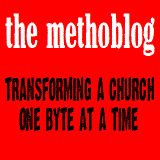The Dancing King
The old Africa is slowly passing away. At least that’s what the younger generation is saying. And they’re not unhappy about it.
The old ways are passing away -- the traditions, the cultural isolation, the polygamy, the chiefs and clans.
One of the few places in Cameroon which still keeps the old traditions alive is the town of Bafoussam, in the West. We received a special invitation to attend the closing ceremonies of the initiation rites of the young men of the area. It only happens once every two years, so we decided we couldn’t miss it.
We were invited by a friend of the King, and were allowed into the Royal Palace, a large estate where several bamboo buildings of varying sizes sit. We were told that the King is the only male allowed to live on the premises; over 200 women – sixty of whom are his wives! -- also live there.
We were seated in the King’s reception building, and met him, along with ambassadors and representatives of several countries. The King is a friendly man who speaks English and French fluently; he welcomed us and asked a few questions about the United Methodist Church. Then the King led us and the rest of the group on a walking tour of the estate.
We were led into a large bamboo building which serves as his “hall of justice.” The King still makes many of the judicial decisions in his area.
We were seated in a large dining hall, and feasted on a banquet meal with several hundred people. After the King gave a short speech, we ate to our heart’s content.
Finally, we were led to the outdoor dancing area. We sat in the grandstand with the other dignitaries, and prepared to watch the festivities, which began with the sacrifice of a goat. (Fortunately, the girls were spared this spectacle, but I was permitted to watch up-close with a camera!) Let me say that I think every Christian pastor ought to be required to see a live animal sacrifice sometime in his or her ministry. It certainly gives a new perspective on all those old, dusty Old Testament passages on the rituals of animal sacrifice; it also sheds new light on the book of Hebrews!
After the bloodletting, the dancing began! While three drummers worked away in the middle of the grounds, a long line of dancers began circling the area. They were dressed in elaborate costumes of colorful beads and animal skins, waving leaves and sticks at each other. The dancers were all male, all elders of the community. The dancing lasted for a good forty-five minutes, and climaxed with the arrival of the King in full regalia, himself dancing around the circle with a huge headdress.
We were unable to stay for the closing ceremony, which involved the young initiates, because it was growing late in the evening and we had a long drive home. But we felt as if we had stepped through a time warp.
After experiencing such a rich, colorful part of African culture, I couldn’t help but feel a little saddened that this heritage is fading. I’m not too wild about goat sacrifices, or about the sixty wives, but there is a beauty, a strong communal bond, that you can viscerally feel during the drumming and dancing.
I have a feeling that what is at stake here is the fight against fear. These dances and rituals arise from the community’s fear; they serve to banish dark spirits, unknown forces and the uncertainty of the future. And because the entire village participates, everyone feels the bonds and ropes of fellowship and security.
And when it’s over, you feel as if you are one body, one in kinship with those sitting nearby. You are an army, a force that can overcome any foe.
The King has danced; what is there to fear?


